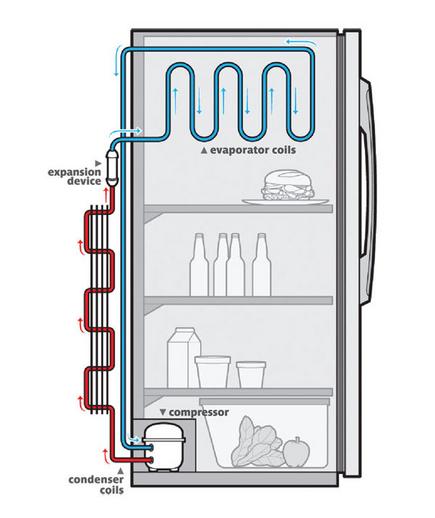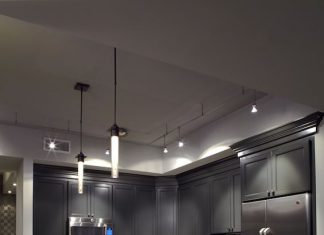It just hums along. Sometimes, it makes strange noises. You’ve stood in front of it a million times.
You’ve explored its inner chambers over and over again, always in search of that perfect treat. It’s an awesome machine. It’s not until you’re forced to do without that you 
When it breaks down, your life is genuinely affected. Food goes bad, and you can’t store frozen goods until they’re repaired.
You have to empty it and restock it.
This is usually when we learn to truly appreciate one of the greatest modern marvels of home convenience – the refrigerator.
How The Refrigerator Works: Understanding One Of Our Favorite Kitchen Appliances
It’s easy to dismiss the fridge as an ice box that just works. Put something in, and eventually, it will be affected by the temperature and get cold, right?
That’s not quite accurate. What it actually does is actively extract heat from warm foods.
But where does the warmth go? You don’t need to open the door to release it…
It’s all about the behavior of gasses. Their temperature will increase when they are compressed.
So, if you squeeze gas into a space that is actually half its volume, the heat energy contained within its molecules will fill only half as much space as it could, and the gas’s temperature will rise.
So, when you release a gas stored at such a high pressure, in this case, squeezed into half its natural capacity, it is free to expand and retake its volume.
The heat in the gas’s molecules cools down because they can now take up more space. You may have noticed that freezing sensation when you spray an aerosol air freshener—it’s this concept at work!
Now that we understand that compressing gases makes them hotter and allowing them to expand causes them to be cool, let’s look at how that applies to the function of a refrigerator.
Coolant is a necessary ingredient in the refrigerator’s chilling process. It is a chemical designed to alternate between being a cool liquid and a hot gas.
It enters an expansion valve as a liquid. As it moves forward, an extreme temperature drop causes it to turn into gas.
The pipe that contains it is designed to get wider to allow the gas to expand and get cold. It flows around a chiller cabinet and absorbs heat from the food products.
Affixed just outside the fridge is an electrically powered pump (that squeezes the gas) called a compressor (which causes the inherent hum).
The compressor is attached to the condenser, a grill-like device that releases the heat like a thin radiator.
Meanwhile, the gas remains and is circulated, repeating the process continuously. Heat is removed from the inside and expelled externally.
There are over eight million refrigerators sold in the U. S. each year. We’ve all grown up using them. But how many of us have ever deeply considered the aspects of the innovative science that keeps the machine working constantly?
Or wondered how it transforms liquids into gasses and water into ice while keeping our favorite drinks cool and food fresh?
Representative of good fortune, the refrigerator is just another appliance that most of us would have a hard time learning to live without. Thankfully, its crucial position in the kitchen will not be challenged for a long time!










